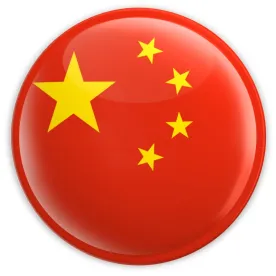Friday marked the official start of China’s “Two Sessions,” shorthand for the annual parallel meetings in Beijing of the National People’s Congress (“NPC”) and the Chinese People’s Consultative Conference (“CPPCC”).
Beginning on March 3rd and 5th, respectively, the CPPCC and NPC bring over 3,000 government officials, as well as scores of business people and even celebrities, to Beijing in order to discuss the central government’s top policy priorities, pass legislation, and offer new proposals. While the meeting of the National People’s Congress is largely seen as a rubber-stamping exercise, and the debate in the CPPCC is far from unhindered, there can be occasional moments of genuine debate. More important, these meetings offer clues as to the Chinese government’s top policy priorities and strategic direction.
On Sunday, the National People’s Congress will open with Premier Li Keqiang presenting the government work report – described by some as China’s version of the US President’s State of the Union address – during which he will discuss a draft of government policy priorities and announce macroeconomic targets including the government’s official GDP growth target (some expect it to be lowered to around 6.5%, while others believe it will be kept in the 6.5-7% range once again). As the NPC and CPPCC sessions progress, observers will be looking for signals regarding a range of policies including structural economic reforms, military reform efforts, and more. Foreign investors are also keen for further indications of market access openings in the service sector.
While the Two Sessions take place every year, this year’s meetings may have increased significance due to important political developments in China and abroad. The Chinese Communist Party is set to hold its 19th Party Congress this fall – held once every five years – during which many senior leadership positions will be turned over. Information regarding the leadership changes is kept tightly under wraps in advance, so observers will be scrutinizing even small gestures (actual or perceived) during the Two Sessions for hints. The international community will also be watching for signs of a foreign policy response to the Trump administration’s rhetoric towards China – including challenges to China’s claims in the South China Sea and other aspects of the bilateral relationship – and what appears to be an American reconsideration of its global role and the value of the international economic and political institutions it has championed since the end of World War II. China’s response so far has been to take a more internationalist tone in recent weeks, as evidenced by Xi Jinping’s speech to the World Economic Forum at Davos, which was widely lauded as a resounding defense of free trade and international economic cooperation. (This increased internationalist tone juxtaposed against continuing concerns regarding Chinese barriers to trade and investment offers an interesting dynamic going forward.)
The Two Sessions are also an opportunity to hear from a broader spectrum of voices within the Chinese government—even some with divergent views on certain policies. NPC representatives will put forward policy proposals on topics including anti-corruption, economic reform, environmental protection, social welfare, and more. Similarly, at the CPPCC, representatives from the ruling Communist Party and China’s eight sanctioned non-Communist political parties (commonly referred to as the United Front) will meet to draft proposals regarding top policy priorities.
Near the end of the Two Sessions, the NPC will pass a raft of legislation proposed by the central government and announce appointments for certain government positions. In the coming weeks, the implications of the Two Sessions for China’s future and for China’s response to shifting global paradigms will become more apparent.
Elaine Wang contributed to this post.




 />i
/>i
